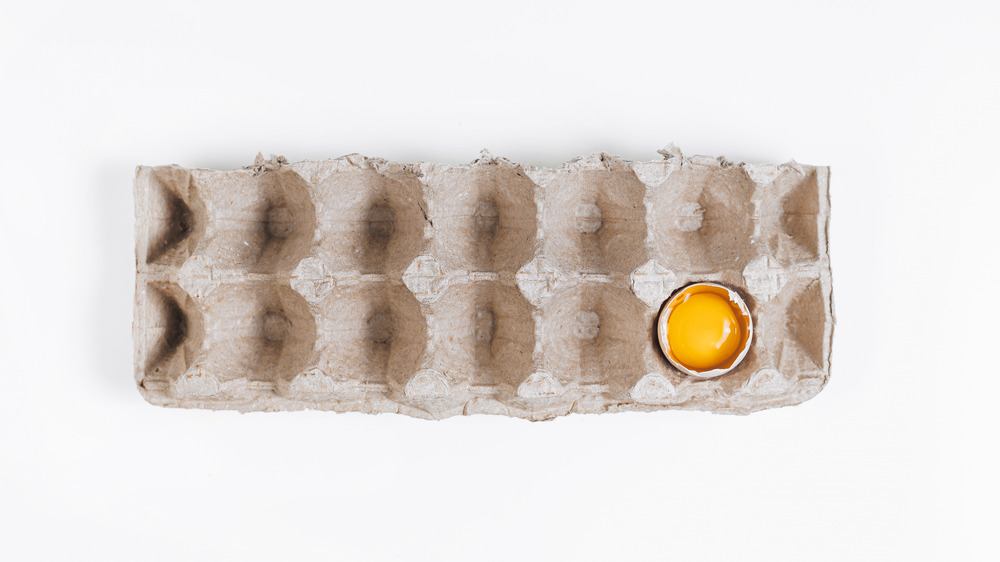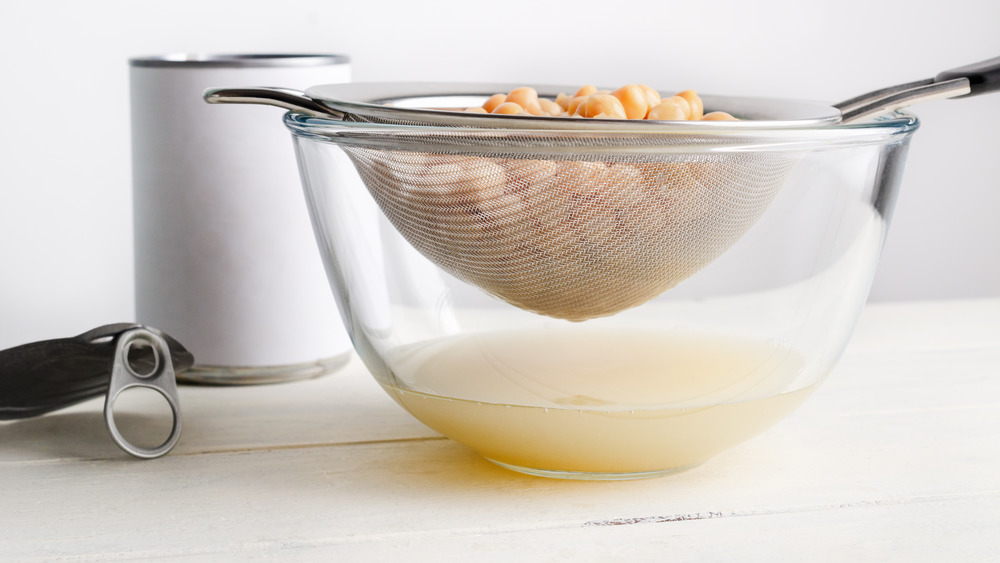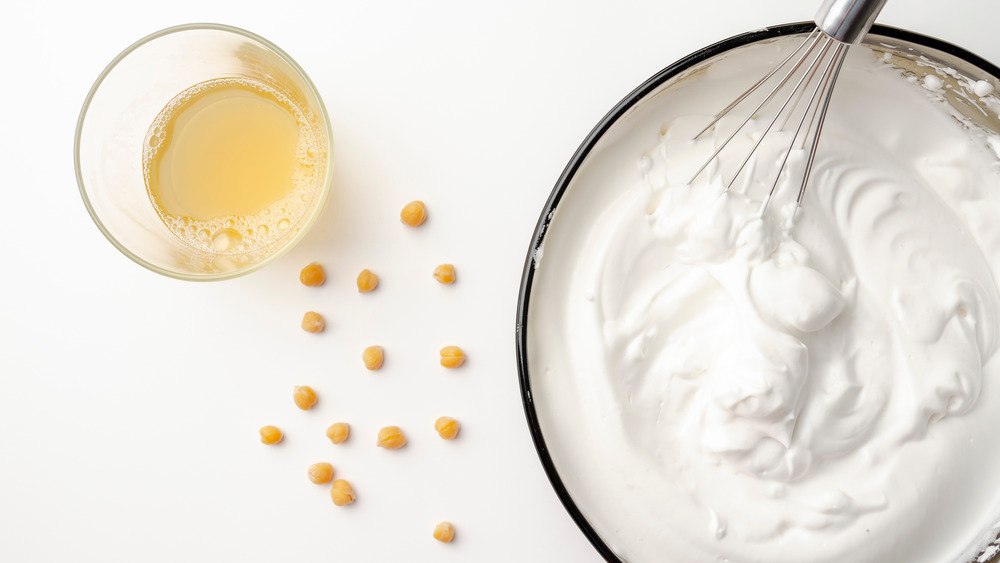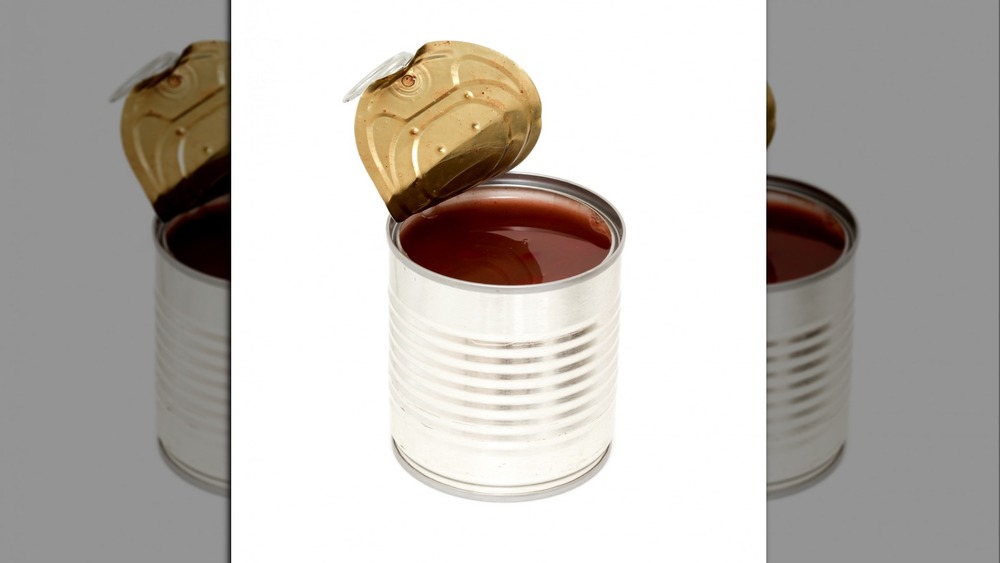The Surprising Ingredient You Didn't Realize You Can Swap For Eggs When Baking
Eggs play a vital role in baking. Sure, most yeast bread recipes are egg-free, and there are also certain cookies such as shortbread where eggs aren't necessary, nor do pie crusts typically contain eggs. But with cakes, muffins, quick breads, and cookies where you want some rise and a soft, chewy texture, eggs are an absolute must, and it's pretty crucial to get the size just right. If you're trying to accommodate a vegan diet (your own or someone else's) or if you just happen to run out of eggs, you could have a problem. Unlike milk, flour, and various different types of spices and flavorings, eggs can be a particularly tricky ingredient to substitute.
Well, what should you do when presented with such a cooking quandary? If you've got Martha Stewart on speed dial, she'll probably know just what to do, but since most of us don't in lieu of a celebrity chef, we decided to see what a food scientist might have to say on the subject of egg substitutes. Tiffany Stooksbury, who is a senior food scientist as well as a chef with BUSH's, told us she knew just what to use for any and all egg substituting needs (short of an actual omelet, of course): the miracle substance known as aquafaba.
What is aquafaba?
Is aquafaba some hard-to-obtain specialty ingredient that must be ordered online if you don't happen to live in a city large enough to support a gourmet vegan grocer? Why, no. Aquafaba is readily available everywhere, even in the most remote and rural outposts. Chances are, there's an ample supply of the stuff even in Antarctica. More to the point, odds are, you've already got some ready to go in your own kitchen.
How could this be? Simple — if you'd studied up on those Latin root words for your SATs, you might be able to dredge up from the darkest corners of memory the fact that aqua means water and faba means bean. Aquafaba = bean water. As in the stuff you drain off a can of beans. Although, as Stooksbury says, "Next time you make your favorite bean dish don't throw out the liquid — save it to make something delicious!"
Sounds a bit weird? Actually, vegan chefs and those who aren't looking to waste food have been making good use of this ingredient since the mid-2010s, even if, as The Guardian points out, the reason why aquafaba works is still something of a mystery.
How you should be using aquafaba
Stooksbury says of aquafaba, "You can use it anywhere you would use eggs or eggs whites." It can be whipped up just the same way you'd whip an egg white, and can be used to make meringues, she explains. The proof is in the results, and one Twitter user even used aquafaba to make a batch of macarons that look just as pretty as traditional ones.
According to Stooksbury, the chefs of the BUSH's test kitchens have used the juice from their products (you know, BUSH's beans) to whip up " mayo, salad dressings, meringues, mousse or pudding, cookies, cakes," adding "I have seen it used in cocktails." Still, it is when it's used in baking that aquafaba really comes into its own.
Stooksbury says, "Compared to other egg replacers, I think aquafaba provides texture that is closer to what you would find if you used eggs." She also extolls the fact that, unlike many other vegan food substitutes, aquafaba is incredibly budget-friendly. "Plus," she points out, "you get the bonus of beans that you can use for another meal."
Tips for baking with aquafaba
As Stooksbury tells us, aquafaba is best when used at room temperature instead of straight out of the fridge (straight out of the can is okay, though). "Similar to eggs," she says, "you get better volume when you whip it if it is not cold." America's Test Kitchen adds the helpful hint that cream of tartar will give aquafaba added stability and help it whip faster, making baked goods made with this extra ingredient rise higher and have a fluffier texture.
While Stooksbury characterizes aquafaba as being "not bean specific," she does say that she prefers using the liquid from a can of chickpeas (aka garbanzo beans) since she finds that "the brine or liquid has a nuttier, less beany/earthy flavor." What's more, she has also found that "aquafaba from garbanzo beans forms the stiffest peaks when whipped," and her best results have come from baking with it.
If you want to use the liquid from a darker bean such as black beans, that's ok, too, but Stooksbury feels this type of aquafaba "is best suited for chocolate treats." One additional tip she offers is using low sodium beans, since with the full-sodium product it can be more difficult to monitor how salty the finished dish is. So no sweat if you don't have eggs on hand — simply crack open a can of beans instead.



